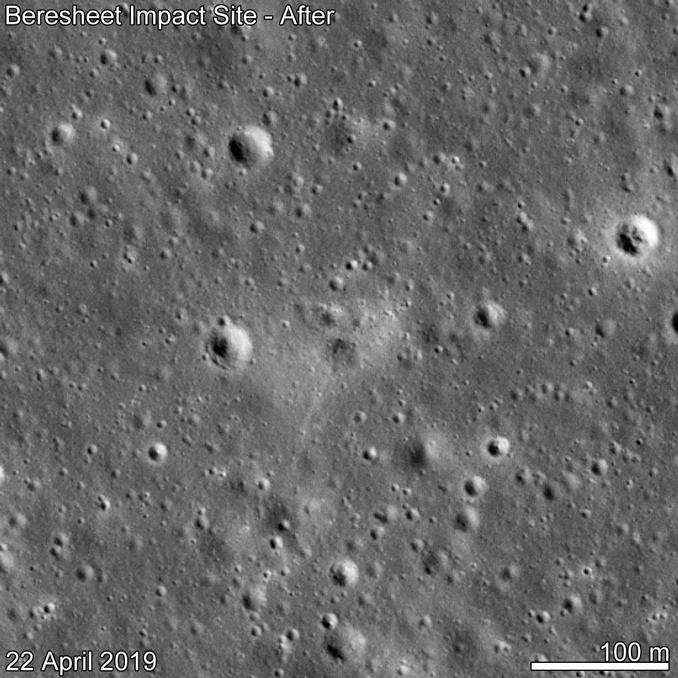
Executing an erroneous command sequence during its historic descent to the moon 11 April, the Israeli Beresheet robotic lander slammed into the surface at some 3,600 km/h (2,200 mph) at an angle of about 8.4 degrees, disintegrating on impact and creating a dark, elongated smudge about 10 metres (32 feet) across.
Eleven days after the crash, NASA’s Lunar Reconnaissance Orbiter flew overhead and captured an image of the impact site, allowing a before-and-after comparison and calculations to help researchers determine what happened in the privately-developed landers final moments.
The LRO was 90 kilometres (56 miles) above the crash site when snapped the images and was unable to detect any signs of a crater. It’s possible a crater was excavated that’s too small for the orbiter’s camera system to resolve, or it may be that Beresheet simply gouged the surface thanks to the spacecraft’s shallow impact angle, fragility and velocity.

“The smudge is likely a roughened surface (more micro-shadows) due to the impact and disintegration of the lander,” the LRO Camera team said on the instrument’s web site. “Surrounding the smudge is an area of increased reflectance (up to 20% higher). This ragged zone spans 30 to 50 meters from the smudge and includes a ray that extends southward about 100 meters.
“The higher reflectance was likely caused by gases or very fine high-speed particles rapidly moving away from the impact site, which smoothed the upper layer of regolith and redistributed fine soil particles, which in turn increased reflectance.”
The team compared the Beresheet crash site to impacts of other small spacecraft – LADEE, Ranger and GRAIL – that hit the moon at roughly the same speed.
“We saw that the white tail stretching from the landing halo towards the south is a shape that’s consistent with Beresheet’s southward descent trajectory and angle of approach,” NASA said in a release.
SpaceIL, the non-profit behind the Beresheet project, said in a Twitter posting the halo “was likely formed by soil particles blown outward” during the lander’s descent, adding “it was traveling faster than most speeding bullets when it hit the Moon’s surface.”
The Royal Observatory tweeted best wishes for a softer landing when Beresheet 2 eventually heads for the Moon.
“Thanks,” SpaceIL replied. “We’re working on it.”



